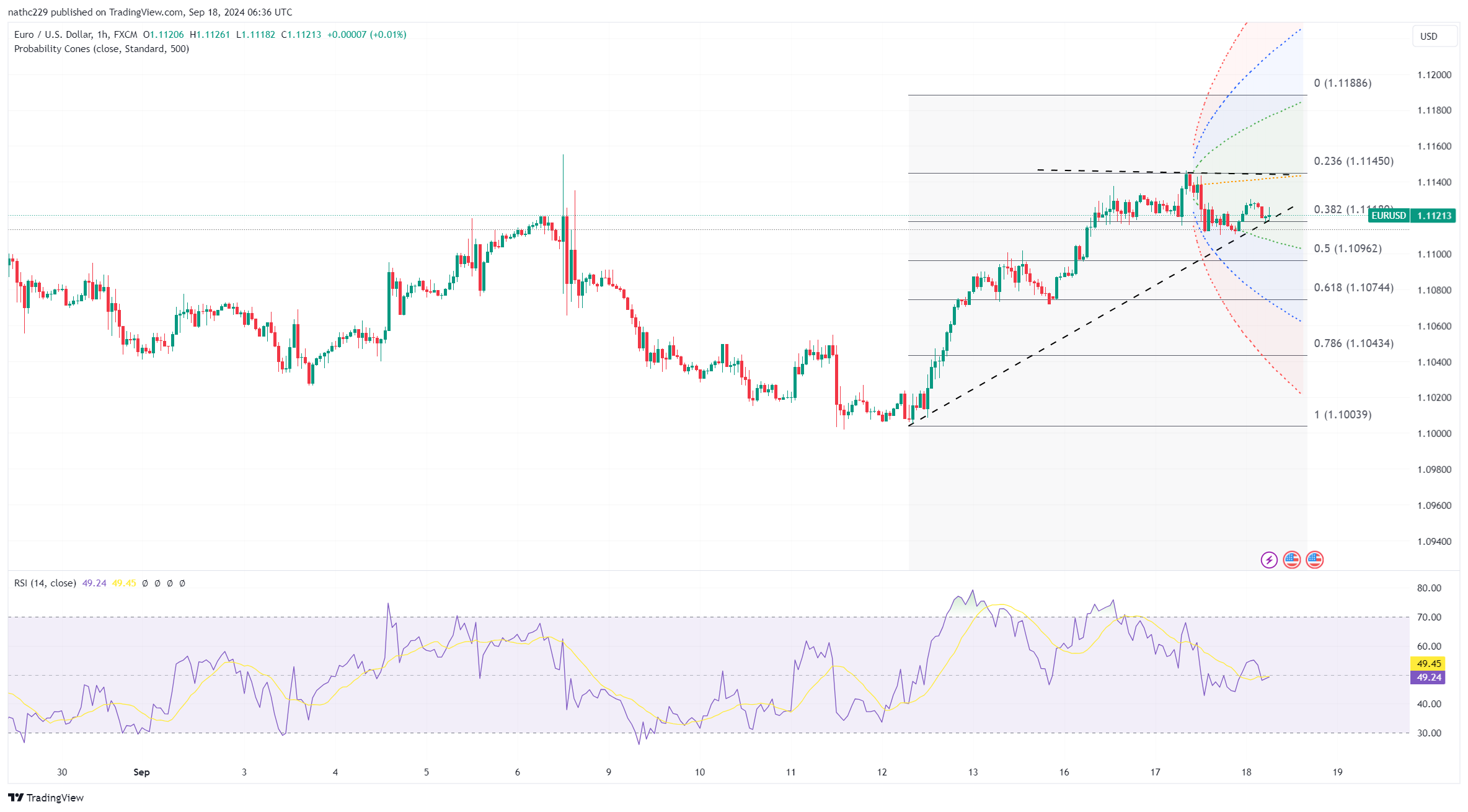EUR/USD Poised for a Potential Decline Amid Fed Expectations

The EUR/USD currency pair has experienced significant gains since the Federal Reserve’s July meeting, reaching levels above 1.1200 before slightly retreating. As the Federal Open Market Committee (FOMC) meeting approaches this week, the pair hovers closer to recent highs, but these gains are at risk. The market's anticipation of a 50 basis point (bps) rate cut from the U.S. central bank on Wednesday, combined with an expectation of a robust easing cycle, has been a key driver of the 4.0% surge from August’s lows.
Much of the optimism surrounding the pair is rooted in recent remarks by Federal Reserve Chairman Jerome Powell, particularly during his speech at Jackson Hole. Powell suggested the Fed was cautious about any labor market weakness, reinforcing hopes for aggressive monetary policy easing. In line with this, data indicating a softening in U.S. employment since July further supports market bets on a sizable rate cut. However, the release of stronger-than-expected August retail sales and industrial production figures complicates the narrative. These results may give the Fed enough reason to consider a more conservative approach with only a 25bps cut, rather than the widely anticipated 50bps reduction.
At present, market pricing reflects a roughly 65% chance of a 50bps cut, leaving room for disappointment. Should the Fed opt for a smaller rate cut or signal a slower pace of future reductions, the U.S. dollar could rebound sharply. A hawkish tone from Powell, combined with policymakers maintaining their current rate projections, could drive U.S. Treasury yields higher. This would widen the yield spread between U.S. and German bonds, exerting downward pressure on EUR/USD.
In such a scenario, the bullish technical indicators that have supported the EUR/USD rally might reverse, potentially erasing much of the gains seen since August. The pair may struggle to maintain its recent upward momentum if market expectations are not met.
As of the latest trading sessions, EUR/USD dipped to 1.1112, down by 0.14% after touching a 10-day high of 1.1146. The pair's decline was driven by stronger U.S. economic data and rising U.S. Treasury yields, which pushed the dollar higher across the board. Despite these setbacks, the pair remains buoyed by tightening spreads between U.S. and German yields, which has limited the downside.
Looking ahead, investors will be closely watching the FOMC decision, the release of the Summary of Economic Projections (SEP), and Powell's press conference for any signs of dovishness or a more aggressive rate-cutting cycle. A less dovish Fed stance than anticipated could trigger a sharp drop in EUR/USD, undermining the bullish signals seen in the technical charts.

